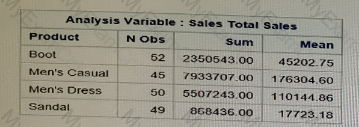Which code uses the correct syntax to conditionally create the two variables age-Cat and account?
Which two statements are true about data set options such as KEEP= and RENAME =? (Choose two.)
Which PROC PRINT statement controls the order of the variables displayed in the report?
Which statement is true about the DROP statement during the compilation phase of the DATA step?
Given the following DATA step:

What is the value of average?
Enter your numeric answer in the space above.
What is the default byte size of a numeric variable?
Enter your numeric answer in the space above.
The data set Snacks contains three variables (productName, Flavor, and Price). Given the program shown below:

What is the type and length of SnackType?
Which ODS EXCEL statement correctly creates an Excel workbook using the ANALYSIS style?
Given the following code:

Which variables are created with the BY statement?
Given the SAS data set WORK PRODUCTS:
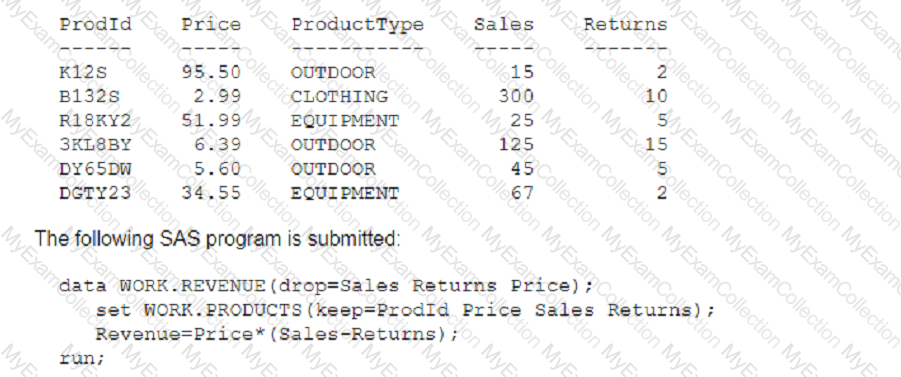
How many variables does the WORK REVENUE data set contains?
Given the display of the CITIES data set:
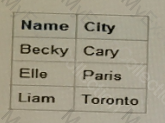
Which program creates the PROC PRINT report below?
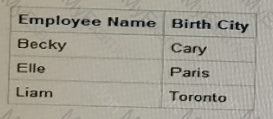
Given the report shown below:
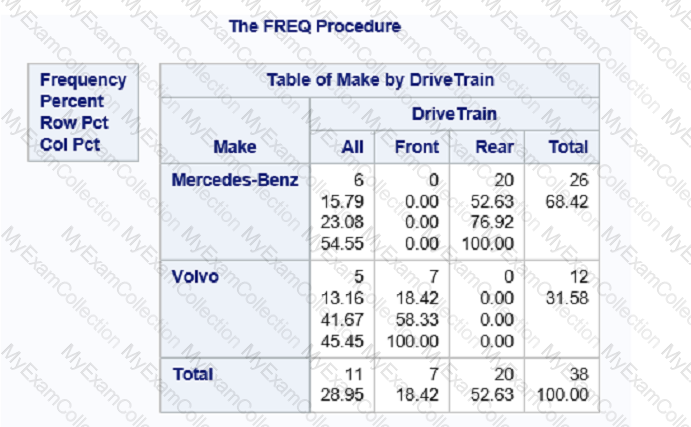
Which PROC PREQ step creates the frequency report?
Given the input data sets EMPLOYEES and DONATIONS, and the output data set NODONATIONS below:
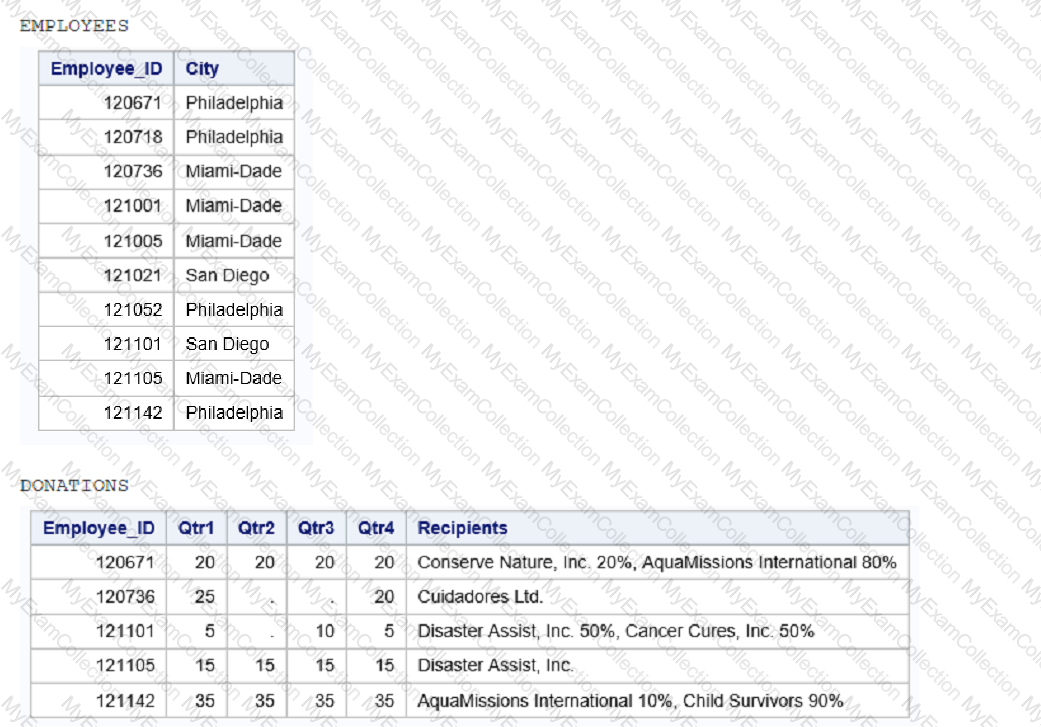
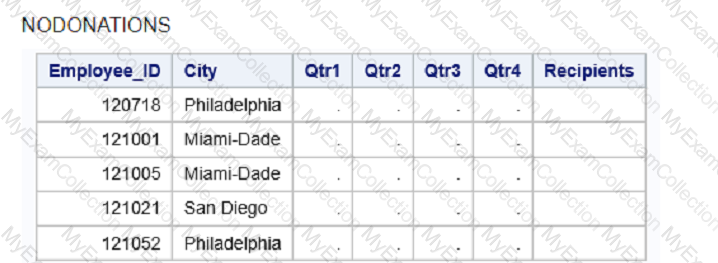
Which option renames the variable Name to StudentName when reading the ClassRoster data set?
Which variable in the Program Data Vector represents the number of times the Data step has iterated?
